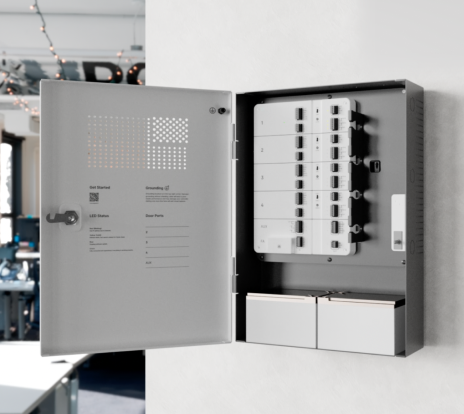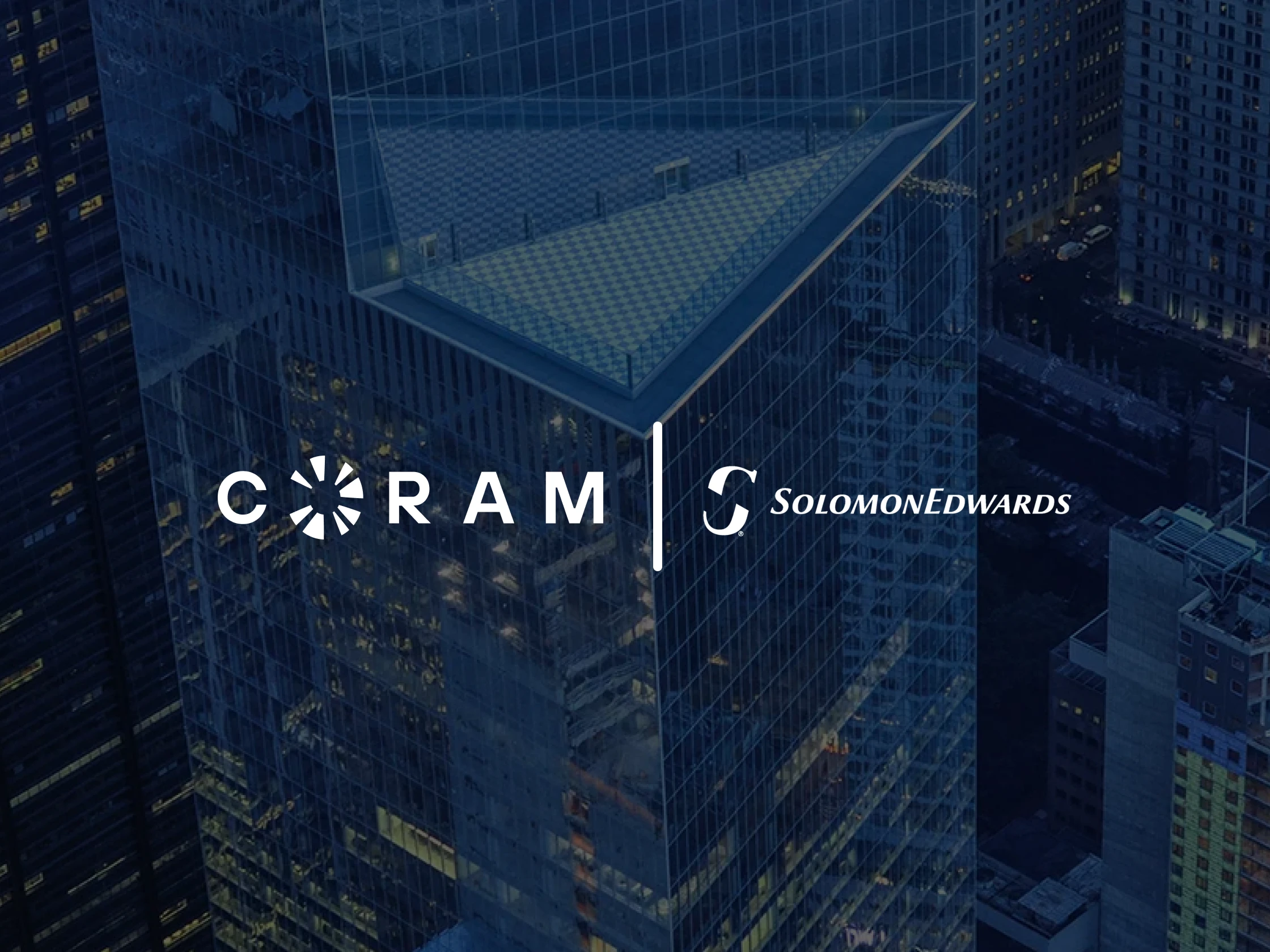U.S. retailers reported a 93% increase in the average number of shoplifting incidents in 2023 compared with 2019. This lack of control is an inconvenience and a direct threat to your assets, employee safety, customers, and overall peace of mind.
A single compromised key can lead to inventory loss, internal theft, or even unauthorized access that jeopardizes safety. Industry data shows internal (employee) theft accounted for roughly 29% of total retail shrink in an NRF survey.
Fortunately, modern retail access control systems are designed to eliminate these risks. By implementing a smart, keyless technological solution, you can gain complete command over your premises, granting and revoking access instantly while keeping a detailed log of every entry.
This guide shows you a practical, scalable retail store access control system that simplifies staff permissions and pairs with video for clear audit trails while safeguarding your shop.
What is Access Control in Retail?
Access control in retail refers to the security measures designed to regulate and monitor movement within a store. It is a system that ensures only the right people are in the right places at the right time.
By limiting access to stockrooms, cash offices, and other sensitive areas, retailers can reduce theft, protect valuable inventory, and create a safer environment for both staff and customers.
In addition to strengthening store security, effective access control fosters trust, demonstrating to customers that their safety is a top priority.
Types of Retail Access Control for Storefront Security Operations
Retailers have different security needs depending on store size, layout, and operations. From touchless systems to cloud-based solutions, modern access control offers flexible ways to protect staff-only areas and manage entry points. Each type balances convenience with safety while minimizing disruption to daily business.
- Biometric Access Control
Biometric access control for retail stores uses personalized physical characteristics such as fingerprints, facial patterns, or retinal scans to verify identity and grant entry.
This method offers a high level of security for retail building access control, as these biological markers are virtually impossible to replicate or share.
Thus, it is ideal for protecting highly sensitive warehouses or areas containing valuable assets.
- Smart Locks
Smart locks represent a modern, keyless approach to managing entry points within a retail environment. These devices replace traditional keys with convenient methods, offering a straightforward upgrade for access control retail operations.
For small businesses that only need to secure one area, such as a storehouse or office, smart locks offer a cost-effective solution. However, they are often feature-limited and may not provide the comprehensive security larger operations require.
It often lacks the user verification, detailed audit trails, and centralized management capabilities required for securing an entire property. While excellent for controlling a lone internal door, smart locks are generally not recommended as the sole method for comprehensive retail building access control.
Their simplicity makes them better suited for targeted use rather than as a complete enterprise-grade security platform for access control for retail across multiple entry points.
- Cloud-Based Access Control
For modern retail operations, a cloud-based access control system is often the superior choice, offering unmatched flexibility and centralized management. This approach to retail building access control allows managers to grant or revoke permissions instantly from any internet-connected device, eliminating the need for physical key swaps.
It effortlessly scales to manage many employees, making it an ideal core component of any retail store access control system.
A key advantage of this type of retail access control is the ability to provide secure, temporary access. Store managers can remotely unlock doors for scheduled deliveries, allowing delivery personnel to securely deliver goods without requiring permission from on-site staff.
This combination of remote features, user-friendly operation, and enhanced security makes cloud-based systems one of the most effective solutions for retail building access control.
- Touchless Access Control
Touchless access control is becoming a go-to security solution for modern retailers. Instead of relying on physical keys, employees can gain entry using mobile devices, key cards, fobs, or even biometric scans, all without making contact.
These systems can be installed at main entrances, exits, and restricted areas so that only authorized staff can access sensitive spaces. Beyond convenience, touchless access control supports real-time monitoring of who enters and when, making it easier to track activity and spot irregularities.
Management can create, revoke, or adjust credentials remotely, giving them full control without needing to be on-site. Retailers can also set time-based locks for after-hours protection and program automated alerts to detect breach attempts.
Ultimately, touchless access control boosts security while simplifying operations. This helps retail businesses work efficiently without compromising safety.
- Role-Based Access Control for Staff and Managers
RBAC is a method of managing retail access by assigning permissions based on an employee’s role within the business. This means you can create precise, customizable profiles; for example:
- A store manager might have 24/7 access to the cash office, stockrooms, and server closet.
- A sales associate's credentials only permit entry to the staff break room and main sales floor during their scheduled shifts.
- A warehouse employee might access inventory areas but be restricted from sensitive financial offices.
With RBAC access control, employees can only enter areas essential to their job functions, which minimizes the risk of internal theft.
Also, when an employee’s role changes or they leave the company, administrators can instantly update or revoke their access across all doors. By doing so, they eliminate any potential breaches.
- Integrated Access with Video Surveillance
This combination turns two standalone security components into a unified platform that provides video coverage while securing your store. Imagine being able to view the live footage of a restricted stockroom door that was forced open after work hours.
Without video integration, you may know an event occurred but lack visual context. With an integrated system, however, the moment a door is forced, the access control system can:
- Trigger nearby cameras to automatically begin recording
- Send a clip to your phone showing you exactly who is there and what is happening in real-time.
This integration also aids in investigations and resolving false alarms, saving valuable time and resources. That’s especially important because retailers report rising aggression among shoplifters: in recent industry studies, the majority say shoplifters have become more violent or aggressive since 2019.
This means video surveillance solutions will help to catch these culprits. By merging access control with video surveillance, you create a proactive security environment that deters threats and provides the evidence needed for internal accountability.
Why Coram is the Best Retail Access Control System?
Retail store owners and managers need a system that controls entry and gives them complete visibility and flexibility over who accesses their premises.
And Coram’s retail access control system is designed to meet this need. Here is why Coram stands out as the best solution for modern retail businesses.
- It is Cloud-based
At its core, Coram combines reliability with innovation. Unlike traditional systems that rely heavily on local servers, Coram is fully cloud-based. This means retailers can cut down on expensive maintenance costs while gaining real-time access to data from anywhere.
For store managers running multiple outlets or franchise operators managing several branches, this cloud integration makes oversight seamless and cost-effective.
- Highly Customizable
Beyond its architecture, Coram is highly customizable. Store owners can assign access levels to employees, contractors, or visitors, right down to specific doors and timeframes.
Whether it’s restricting access to storehouses, controlling entry to cash-handling areas, or scheduling cleaning crew access outside business hours, Coram allows you to fine-tune permissions with ease.
And if a worker leaves or roles change, granting or revoking access is instant.

- Integration with Video Management Security (VMS)
Security is further enhanced through integration with video surveillance. By linking Coram’s surveillance cameras with your existing setup, you can monitor and record all access attempts.
Features like tailgating detection ensure that if one staff member enters an authorized area and multiple others sneak in behind them, you will be notified immediately. This safeguards your shop against theft or unauthorized entry.
- Scalability
As your retail business grows, the system scales with you, managing multiple locations and multiple users without complications. Even during internet outages or power failures, Coram’s system and backup battery ensure uninterrupted security.
Simply put, Coram gives retailers confidence: smarter control, stronger security, and the flexibility needed to protect both single stores and large retail chains.
Key Benefits of Retail Access Control Systems
Running a retail store means balancing customer experience with strict security measures. Access control systems help retailer outlets achieve both by automating entry and protecting sensitive areas.
Beyond preventing theft, they improve operations, support compliance, and reduce liability risks. And implementing these solutions comes with many other benefits, including the following.
- Improved Physical Security and Theft Prevention
By replacing easily lost, stolen, or duplicated keys with electronic credentials, you ensure that only authorized individuals can enter sensitive areas. This includes storehouses containing merchandise, offices securing cash earnings, and server closets housing private customer and employee data.
This controlled environment reduces both internal and external theft, and directly safeguards your business premises. Furthermore, the system provides round-the-clock protection, which monitors your property even during the many hours it is closed and unstaffed.
- Operational Efficiency and Centralized Management
Modern retail access control solutions, particularly cloud-based platforms, offer unparalleled operational control from a single, unified interface.
Store owners can instantly assign personalized access levels by granting full access to managers while restricting part-time staff to specific areas and times. This flexible control allows you to lock main entrances after hours while keeping receiving bays accessible for scheduled deliveries.
During shift changes, the system efficiently manages staff flow and provides a precise digital log of who entered the building and when. By doing so, it eliminates scheduling confusion and enhances accountability.
- Comprehensive Risk Mitigation and Liability Reduction
A solid retail building access control system is essential for mitigating various business risks. In grocery or food retail, for example, it ensures that only trained staff can access storage areas for perishable goods.
This upholds strict health and safety standards to prevent contamination. From a legal and insurance perspective, installing a security system shows that you have taken all reasonable precautions to protect people and property on-site.
This can strengthen your position if there is an incident and may even lead to reduced insurance premiums.
- Scalable Integration and Future-Proofing
A well-chosen retail building access control is designed to grow with your business. Whether you operate a single location or a retail chain, scalable platforms allow you to add new doors or entire locations to your network with just a few clicks.
This future-proofs your investment and guarantees that your security infrastructure can effortlessly expand alongside your business. Moreover, these systems are built for integration; they can enable you to connect access points with video surveillance, alarm triggers, and mobile alerts.
This creates an interconnected security system that provides a complete view of your store's operations and strengthens response capabilities across the board.
Investing in a modern retail access control system is ultimately an investment in the stability, security, and scalable growth of your entire operation.
Conclusion
Traditional locks and keys are no longer reliable for protecting your retail store, as they leave you vulnerable to copied keys and offer no visibility. This vulnerability demands a modern solution, specifically one that is cloud-based, supports integration, and scales with your business.
Coram delivers precisely that, combining robust access management with video surveillance to protect your assets, staff, and customers. If you are a retail business owner seeking a proactive, all-in-one access management solution capable of growing alongside your business, invest in Coram today.
FAQ
Retail access control systems prevent theft and unauthorized entry by deterring potential criminals and enforcing access restrictions for authorized personnel only. This is achieved through technologies such as keycard access, biometric authentication, and electronic article surveillance (EAS).
Implementing retail access control systems can positively or negatively influence customer experience. A well-designed system enhances perceived safety and contributes to a positive environment. Conversely, an overly restrictive or inefficient system can negatively impact customer satisfaction by causing them frustration.
Access control systems represent a viable and strategic investment for small retail stores. The initial cost is often justified by the long-term advantages: improved security and cost efficiency. However, with many modern options available, you can easily find a system that fits your budget.
Yes, access control can integrate with existing CCTV and alarm systems to provide a more holistic and solid security solution. This synergy improves situational awareness, automates processes, and strengthens incident response capabilities.
It is imperative to conduct periodic reviews and updates of retail access control systems to maintain security protocols and regulatory compliance. Review frequency should be risk-dependent, with a baseline of quarterly assessments for high-risk zones, annual for standard access, and potentially monthly reviews for important data or systems.





%20(7).webp)








.webp)
